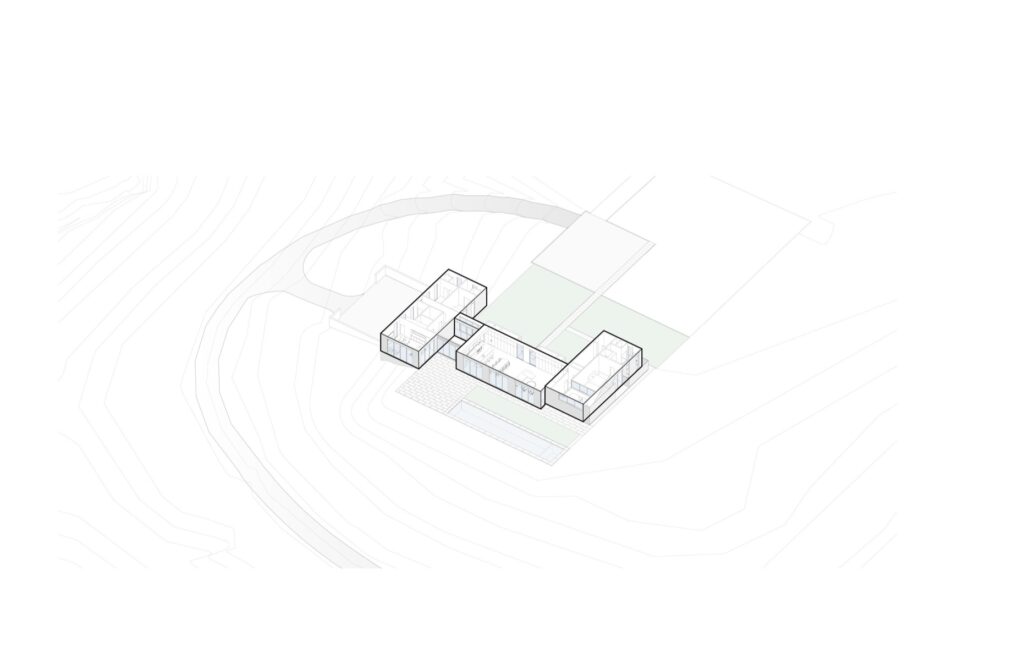Three Hills House occupies the middle hilltop of the eponymous triad, positioned squarely in a glade’s clearing. The approach to the 5,000 square-foot Fredericksburg by car circumnavigates the hill until it sharply turns into the entry path that takes us directly to the heart of the home, in a procession reminiscent of Aline Barnsdall’s 1922 Hollyhock House designed by Frank Lloyd Wright. Three Hills, designed by Richmond- and Brooklyn-based ARCHITECTUREFIRM, is subtler than Hollyhock, however, in its nod to the Mayan Revival of a century ago. There are no abstracted flowers in high relief, no images of the rain god Chac seen at Uxmal, and no stone serpents — just an unadorned frieze that makes the home appear a little grander than the term “one story” suggests.

The frieze also unifies the elements of Three Hills House’s massing defined by a central pavilion (living and dining) and two flanking pavilions (sleeping, working, and exercising). Horizontal bands of western redcedar protrude along the southern façade to provide shading and smooth out flush with the northern façade where no shading is needed. The house below is clad in vertical bands of cedar aligned with the surrounding red maples and hickory trees that reach skyward and envelop the site. It’s as unassuming as it is large.
“We really wanted to be sensitive to the site, and we wanted — as much as the client did — to create something subtle that could live in the landscape,” says ARCHITECTUREFIRM principal and co-founder, Danny MacNelly, whose firm recently won several awards for its Quirk Hotel in Charlottesville, including a 2020 AIA Virginia Honor Award.

Quietude and simplicity also extends inside for the client, a local couple who wanted a place they could entertain, work, and live with two of their four children who were still at home at the time Three Hills was completed in 2019. Black fixtures, white walls, and cedar accents define the material and visual palette inside the house, which has generous views out to the forest beyond in nearly every corner. It’s as spacious as a home as it is tightly honed as a design.
“We maintained a very simple logic for the house, which grew out of ongoing conversations internally about how different design ideas could contribute to or take away from that logic,” says principal Adam Ruffin. “The clients were really open to that conversation and that process about creating a harmonious experience, inside and out, which is about materiality and creating a sense of calm spatially and visually.”

As for the references to an unadorned neo-Mayan frieze from Uxmal, Ruffin and MacNelly demur on this point — not in protest, but with a wink. They say Three Hills House is about listening to the owner’s needs, responding to the site, and unifying the three volumes in a way that still signals their programmatic functions. Simple as it is, the frieze (or whatever you want to call it) is a striking element that anchors the house and us at the same time.
“We started with the program and the form grew out of that, but that meant we would need a single design element to bring it all together,” says MacNelly. After all, we’re just trying to be quiet in the woods here.”
About the author
William Richards is a writer and editorial consultant based in Washington, D.C. From 2007 to 2011, he was the Editor-in-Chief of Inform Magazine.
